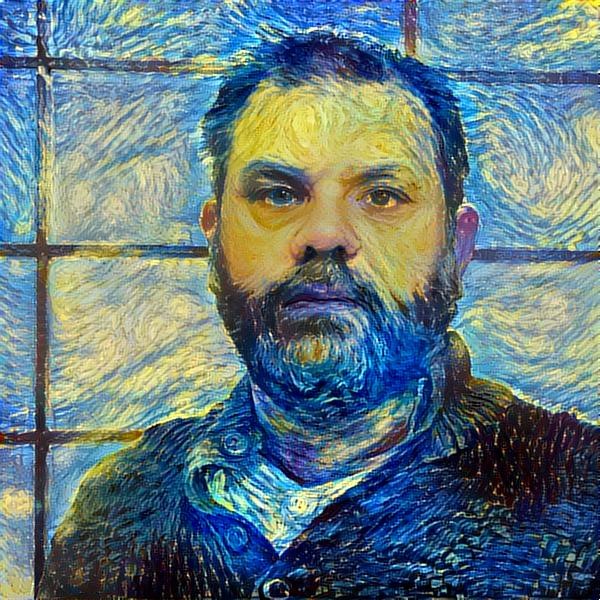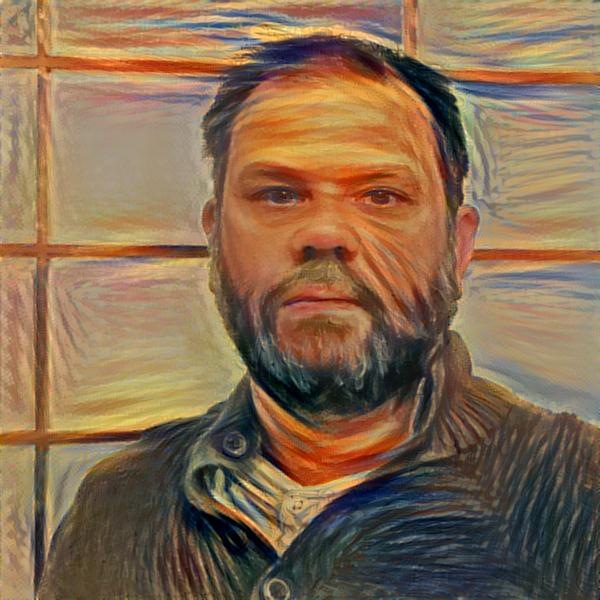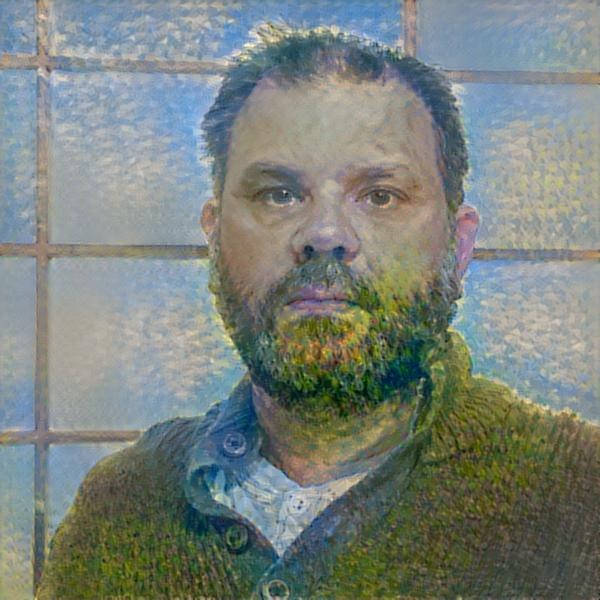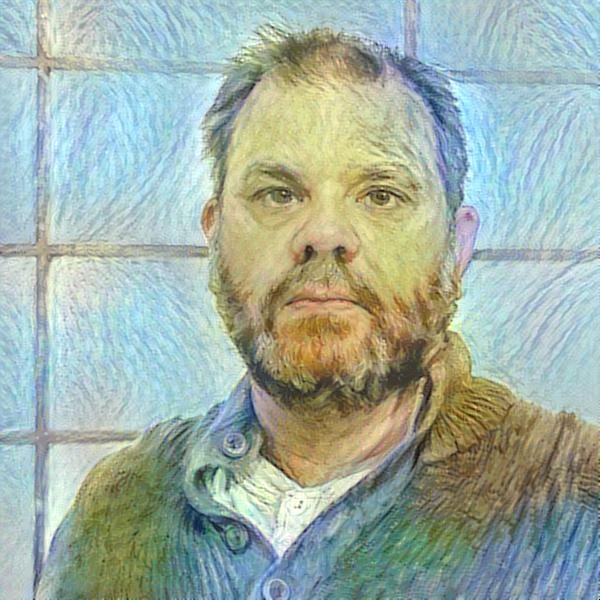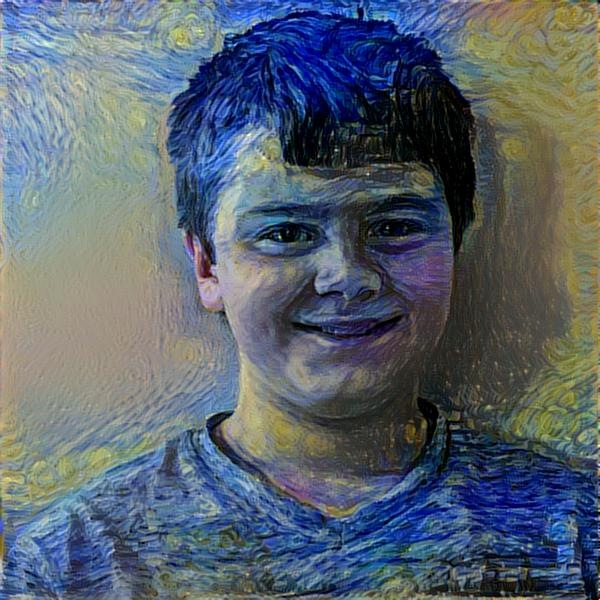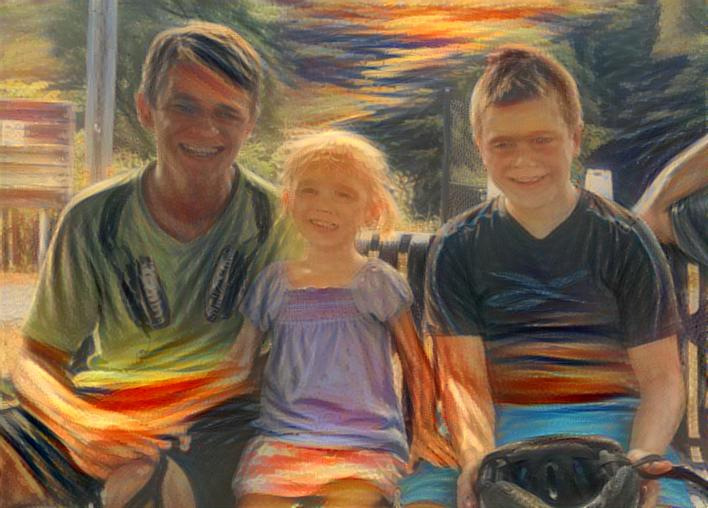Applying Style Transfer to Portraits
Hunter and I have been focusing on reverse engineering the three most famous paintings according to Google as well as a hand selected piece from the National Gallery. These art works are The Mona Lisa, The Starry Night, The Scream, and Woman With A Parasol.
We also just recently got Style Transfer working on our own Tensor Flow system. So naturally we decided to take a moment to see how a neural net would paint using the four paintings we selected plus a second work by Van Gogh, his Self-Portrait (1889).
Below is a grid of the results. Across the top are the images from which style was transferred, and down the side are the images the styles were applied to. (Once again a special thanks to deepdreamgenerator.com for letting us borrow some of their processing power to get all these done.)
It is interesting to see where the algorithm did well and where it did little more than transfer the color and texture. A good example of where it did well can be seen in the last column. Notice how the composition of the source style and the portrait it is being applied to line up almost perfectly. Well as could be expected, this resulted in a good transfer of style.
As far as failure. it is easy to notice lots of limitations. Foremost, I noticed that the photo being transferred needs to be high quality for the transfer to work well. Another problem is that the algorithm has no idea what it is doing with regards to composition. For example, in The Scream style transfers, it paints a sunset across just about everyone's forehead.
We are still in processing of creating a step by step animation that will show one of the portraits having the style applied to it. It will be a little while thought cause I am running it on a computer that can only generate one frame every 30 minutes. This is super processor intensive stuff.
While processor is working on that we are going to go and see if we can't find a way to improve upon this algorithm.
Stroke Maps, TensorFlow, and Deep Learning
Just completed recreations of The Scream and The Mona Lisa. These are not meant to be accurate reproductions of the paintings, but an attempt at recreating how the artists painted each stroke. The Idea being that once these strokes are mapped, TensorFlow and Deep Learning can use the data to make better pastiches.
Work Continues Mapping the Brushstrokes of Famous Masterpieces
Once I created a brushstroke map of Edvard Munch's The Scream, I thought it would be cool to have brush stroke mappings for more iconic artworks. So I googled "famous paintings" and was presented with a rather long list. Interestingly The Scream was in the top three along with da Vinci's Mona Lisa and Van Gogh's Starry Night. Well, why not do the top three. So work has begun an creating a stroke map for The Mona Lisa. In the following image, the AI has taken care of laying down an underpainting, or what would have been called a cartoon in da Vinci's time.
I am now going into it by hand and finger-swiping my best guess as to how da Vinci would have applied his brushstrokes. Will post the final results as well as provide access to the Elasticsearch database with all the strokes as soon as it is finished. My hope is that the creation of the brushstroke mappings can be used to better understand these artists, and how artists create art in general.










